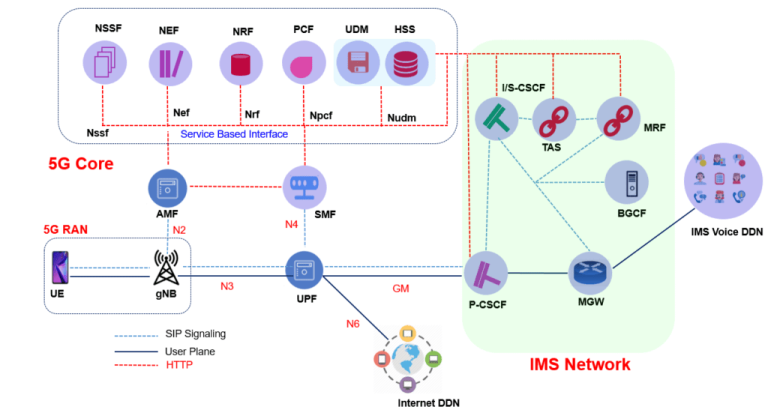A Comprehensive Guide to WB-AMR: Wideband Adaptive Multi Rate Explained
telcomatraining.com – In the ever-evolving world of mobile communication, advancements in audio technologies play a crucial role in enhancing voice quality and optimizing bandwidth usage. One of these significant innovations is the Wideband Adaptive Multi Rate (WB-AMR) codec. This article will delve deep into what WB-AMR is, its benefits, and its application in modern mobile networks.
What is WB-AMR?
Wideband Adaptive Multi Rate (WB-AMR) is an audio codec used in voice communication systems, particularly in mobile networks. It is an enhanced version of the Adaptive Multi Rate (AMR) codec, which is widely utilized for compressing speech signals in voice calls. The “wideband” aspect refers to the codec’s ability to support a wider frequency range compared to traditional narrowband codecs, thereby improving the audio quality of voice calls.
The WB-AMR codec is designed to operate in variable bit rates, allowing it to adapt dynamically based on network conditions and available bandwidth. This adaptability ensures that voice calls maintain clear, high-quality audio even in fluctuating network environments.
How Does WB-AMR Work?
WB-AMR operates by compressing audio signals into different bit rates, ranging from 6.6 kbps to 23.85 kbps, with higher bit rates providing better voice quality. The codec adjusts the bit rate dynamically, depending on network conditions, which helps in optimizing bandwidth usage and maintaining call quality.
The “wideband” feature refers to its support for a frequency range of 50 Hz to 7 kHz, compared to the 300 Hz to 3.1 kHz range supported by narrowband codecs. This extended frequency range allows for a more natural and fuller reproduction of the human voice, offering users an enhanced audio experience during voice calls.
Benefits of WB-AMR
- Improved Voice Quality: WB-AMR provides a more natural and clear voice quality, particularly in higher bit rate modes. It captures a wider range of frequencies, which significantly enhances the overall call experience.
- Efficient Bandwidth Usage: With its adaptive bit rate feature, WB-AMR adjusts the bit rate according to network conditions, ensuring that the connection remains stable while minimizing data consumption. This results in more efficient use of bandwidth and improved call reliability.
- Better Network Performance: WB-AMR improves call clarity even in environments with low signal strength or poor network conditions. By dynamically adjusting the bit rate, it ensures that voice calls remain intelligible, reducing the likelihood of dropped calls or poor audio quality.
- Support for 3G and 4G Networks: WB-AMR is widely used in both 3G and 4G LTE networks, making it a versatile solution for modern mobile communication systems. Its compatibility with these networks ensures that users experience optimal voice quality, regardless of the technology being used.
Applications of WB-AMR
- Voice over LTE (VoLTE): WB-AMR plays a pivotal role in Voice over LTE (VoLTE) services, which provide high-quality voice calls over 4G networks. By offering improved audio quality and bandwidth efficiency, WB-AMR is a key enabler for delivering HD voice services to users.
- Video Calls and Conferencing: With the increasing popularity of video calls and conferencing applications, WB-AMR provides high-quality voice transmission, ensuring that conversations remain clear even when video is also being transmitted. This makes it an ideal choice for business communication, video conferencing, and social applications.
- Next-Generation Mobile Devices: As mobile devices continue to evolve, the demand for high-quality voice communication has never been greater. WB-AMR is integrated into modern smartphones and other mobile devices to ensure that users experience superior voice quality during calls.
Future of WB-AMR
As mobile networks continue to transition toward 5G technology, the role of WB-AMR will remain crucial in delivering high-quality voice services. With 5G networks offering faster data speeds and lower latency, WB-AMR’s adaptability will be key in supporting seamless voice communication alongside other data-intensive applications.
Additionally, advancements in AI and machine learning may further enhance the performance of WB-AMR, enabling even more intelligent adjustments to bit rates and improving voice quality in real-time. This ongoing evolution promises to provide users with even more reliable and efficient voice communication experiences.
Conclusion
Wideband Adaptive Multi Rate (WB-AMR) is a critical technology in the mobile communication landscape, enabling high-quality voice calls while optimizing bandwidth usage. Its adaptability, enhanced voice quality, and wide network compatibility make it an ideal choice for both 3G and 4G networks, with the potential to remain a key player in future 5G networks. As mobile communication continues to advance, WB-AMR will play a pivotal role in shaping the way we experience voice calls, ensuring that users enjoy clear, reliable, and efficient communication.







